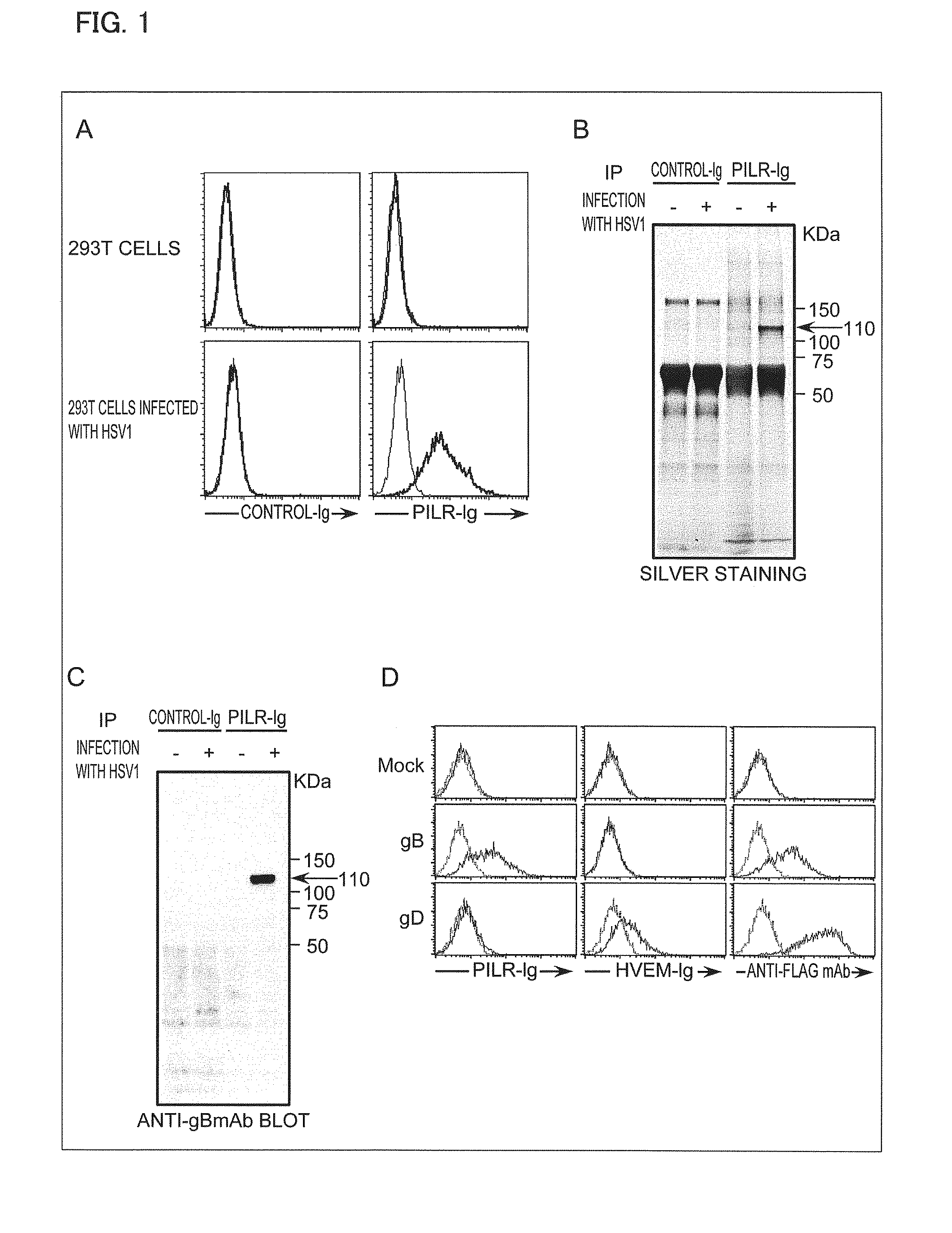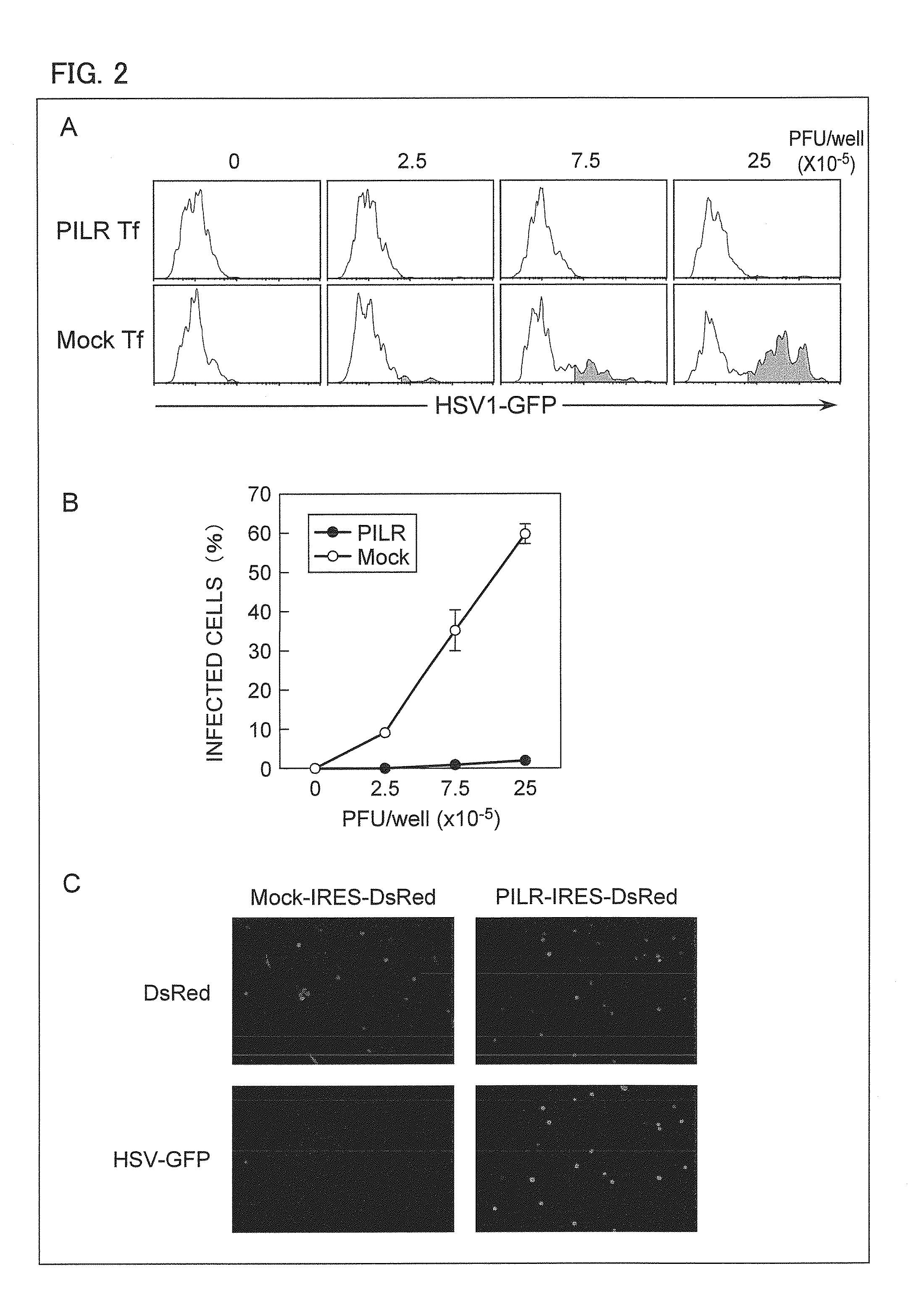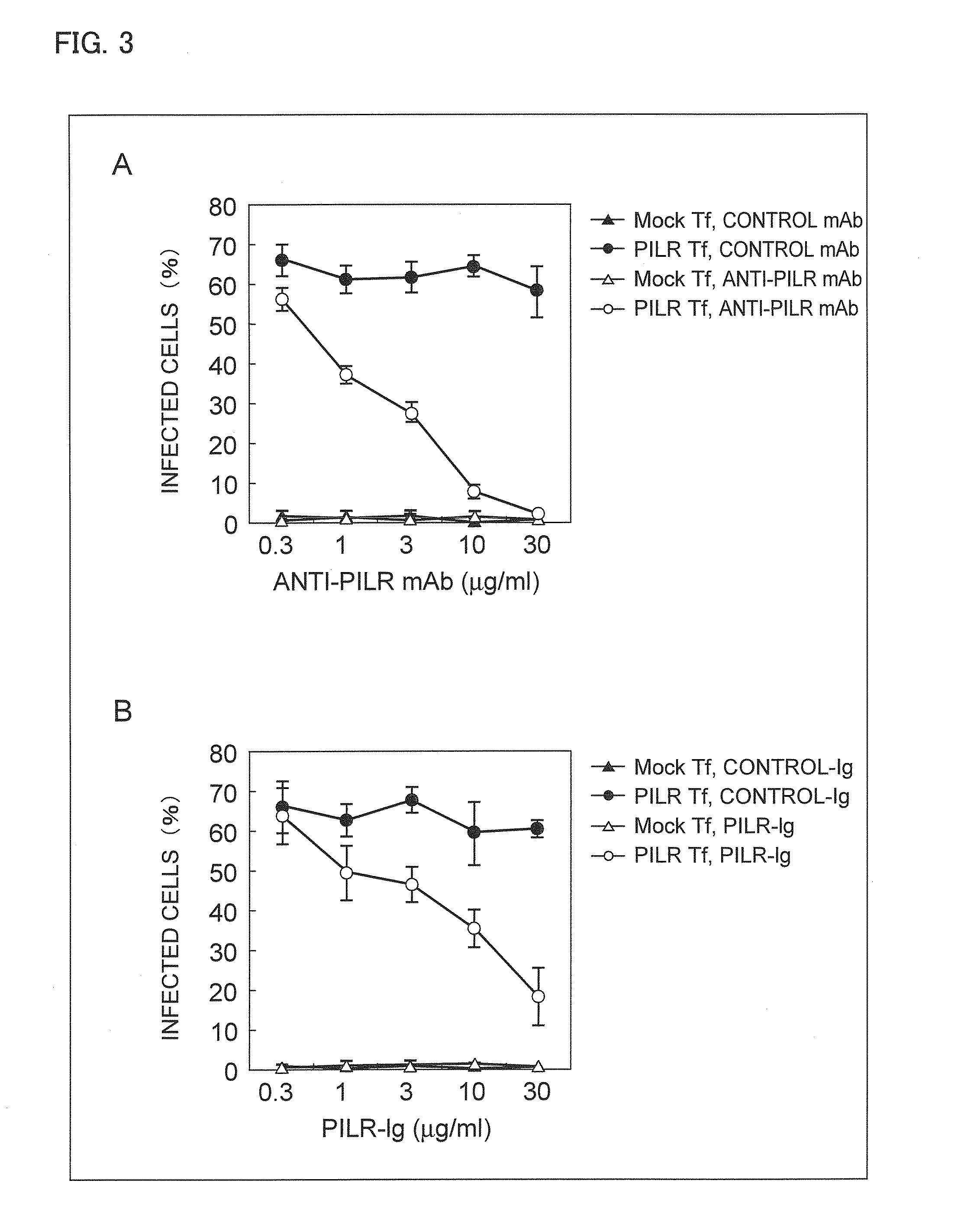Herpes virus infection inhibitor, method for inhibiting infection with herpes virus, and use thereof
- Summary
- Abstract
- Description
- Claims
- Application Information
AI Technical Summary
Benefits of technology
Problems solved by technology
Method used
Image
Examples
example 1
Binding of Glycoprotein B to PILR
[0166]First, a flow cytometric analysis was carried out so as to determine whether an HSV-1-infected 293T cell binds to PILR-Ig.
[0167]A of FIG. 1 shows that an HSV-1-infected 293T cell expresses a ligand bindable to PILR. This indicates that the HSV-1 has the ligand bindable to the PILR, or that the HSV-1 induces a cell to express the ligand bindable to the PILR.
[0168]Next, an analysis for identification of the ligand bindable to the PILR, which ligand was expressed in the HSV-1-infected cell, was carried out. Each lysate of the HSV-1-infected cell or a non-infected 293T cell was lysed with a surfactant, and then immunoprecipitated together with PILR-Ig. Then, each immunoprecipitate thus obtained was subjected to SDS-PAGE, and stained with silver so as to be analyzed.
[0169]B of FIG. 1 shows that, in the lysate of the HSV-1-infected cell, the PILR-Ig caused precipitation of a molecule (protein) of 110 kDa, not a control Ig (CD200-Ig), and that the pr...
example 2
Confirmation of Role of PILR in HSV-1 Infection
[0177]Since some CHO-K1 cells express an unknown ligand bindable to PILR, the inventors of the present invention have purified by a cell sorter CHO-K1 cells without a ligand bindable to PILR, and transfected PILR to the CHO-K1 cells without a ligand bindable to PILR in order to avoid interaction between PILR and a ligand existing on the surface of a CHO-K1 cell.
[0178]The CHO-K1 cells without a ligand bindable to PILR were transiently transfected using pMx-IRES-DsRed expression vector including human PILR. The transfected CHO-K 1 cells were transfected using HSV-1-GFP, and cells expressing GFP in DsRed positive cells were analyzed by flow cytometry. A of FIG. 2 shows the result of the analysis by flow cytometry, indicating that the CHO-k1 cells to which human PILR had been transfected got infected with HSV-1 effectively, but mock-transfected CHO-K1 cells did not get infected with HSV-1.
[0179]B of FIG. 2 shows a ratio of infected cells in...
example 3
Inhibition by Anti-PILRα Antibody of Infection with HSV-1
[0192]In the present Example, acyclovir was used as a control in a test in which infection with HSV-1 was inhibited by anti-PILR antibody. The test confirmed that although acyclovir terminates HSV-1-infected cells, acyclovir cannot inhibit infection itself.
[0193]HSV-1-GFP of 1.5×106 PFU was added to 5×104 CHO-K1 cells to which human PILR had been transfected, and expression of GFP was analyzed 18 hours later.
[0194]30 minutes before adding the virus, 100 μM or 500 μM of acyclovir, or 10 μg / ml of anti-human PILR mAb (M4) was added, and a ratio of infection with the virus was shown in FIG. 10 with a ratio of infection of cells to which nothing had been added (“control” in FIG. 10) being 100%.
[0195]As shown in FIG. 10, it was confirmed that adding a sufficient amount of acyclovir that was an anti-HSV drug did not inhibit infection with HSV, but adding an anti-PILR antibody inhibited the infection. That is, data in FIG. 10 shows th...
PUM
| Property | Measurement | Unit |
|---|---|---|
| Interaction | aaaaa | aaaaa |
Abstract
Description
Claims
Application Information
 Login to View More
Login to View More - R&D
- Intellectual Property
- Life Sciences
- Materials
- Tech Scout
- Unparalleled Data Quality
- Higher Quality Content
- 60% Fewer Hallucinations
Browse by: Latest US Patents, China's latest patents, Technical Efficacy Thesaurus, Application Domain, Technology Topic, Popular Technical Reports.
© 2025 PatSnap. All rights reserved.Legal|Privacy policy|Modern Slavery Act Transparency Statement|Sitemap|About US| Contact US: help@patsnap.com



